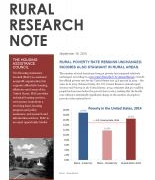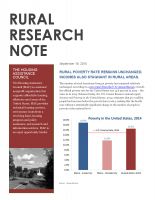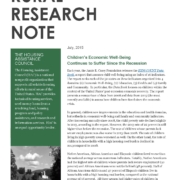Almost every local housing nonprofit begins with a vision: meeting the housing needs of their community. Unfortunately, the path from recognizing that need to meeting it can be difficult. Labor shortages, increasing construction costs, and the complexity of financial transactions and government programs can all make it challenging for housing non-profits to succeed.
That’s why the Housing Assistance Council (HAC) works with housing organizations across rural America to help them overcome both financial and technical challenges. HAC’s goal, as Director of Training and Technical Assistance Shonterria Charleston puts it, is to “create a pipeline for capacity building that allows our partners to get many of their needs met by one organization.”
 For thirty years, Adults and Youth United Development Association (AYUDA) has worked to improve housing conditions and increase access to public services in the colonias in and around San Elizario, Texas. According to AYUDA’s Housing and Community Services Director Miguel Chacon, the group was established to advocate for running water and septic tanks in colonias but has grown to providing home repair, rental assistance, vaccine outreach, food distribution, and more.
For thirty years, Adults and Youth United Development Association (AYUDA) has worked to improve housing conditions and increase access to public services in the colonias in and around San Elizario, Texas. According to AYUDA’s Housing and Community Services Director Miguel Chacon, the group was established to advocate for running water and septic tanks in colonias but has grown to providing home repair, rental assistance, vaccine outreach, food distribution, and more.
As AYUDA has grown, it’s turned to HAC for support. For twelve years, HAC Housing Specialist Anselmo Telles and Housing Development Consultant Eugene Gonzales have provided technical assistance to help AYUDA navigate the hurdles of managing new and expanded housing programs. “I didn’t know anything about housing back then,” remembers Miguel. But, with HAC’s help, AYUDA has developed deeply impactful housing programs. Between 2016 and 2021, AYUDA built or rehabbed over 200 homes. Despite this track record, AYUDA ran into a problem in early 2021.
“We were having trouble with our cash flow,” Miguel explains. AYUDA’s home repair and construction programs are financed by the Texas Department of Housing and Community Affairs (TDHCA). Still reeling from the COVID pandemic, the Department was taking months to reimburse AYUDA for the costs of rehab and construction. This put AYUDA in a difficult position. They could stop work while waiting for payments from TDHCA or they could keep their projects moving forward while struggling to pay their contractors on time.
“As I do the organizational assessment, I look to see if they need money for construction, staffing, or anything like that,” Eugene explains. It was during an organizational assessment of AYUDA that he saw that cash flow was the largest bottleneck in AYUDA’s construction process. So, Eugene reached out to Kristin Blum, HAC’s Senior Loan Officer, to see if our Loan Fund could help. Kristin notes that we wanted to be creative and find a solution that worked for AYUDA. As HAC’s Director of Lending Eileen Neely points out, HAC doesn’t try to fit organizations into boxes. Instead, we focus on understanding each group’s unique needs and tailoring financing to help them achieve their goals.
After meeting with both AYUDA and HAC’s technical assistance team, the Loan Fund came up with a creative financing option. The plan was to establish a $367,000 revolving line of credit. When AYUDA would complete a new home or rehab project, it could draw on this line of credit to bridge the funding gap until TDHCA issued grant reimbursements.
In July 2021, the loan was approved, and AYUDA began to draw on its new line of credit just two months later. According to Miguel, this capital ensured that AYUDA was able to keep building and keep moving forward. Pointing to the 25 homes AYUDA has built or rehabbed in the last year, Miguel explains that “we were able to accomplish that because of the line of credit.”
The upshot of HAC’s holistic approach to capacity building is, according to Eugene, “that groups get the money they need, and then TA comes in to make sure they’re on track.” Ultimately, this means groups can build more affordable homes. Miguel shared that when AYUDA was weighing whether to halt construction at the beginning of the pandemic, his clients urged AYUDA to find a way to keep going. With HAC’s help, AYUDA kept building throughout 2020 and 2021. “That gave our community hope,” says Miguel.
The collaboration between HAC’s lending and technical assistance made both more effective. Our Loan Fund would have never known about AYUDA’s challenges without Eugene. As Kristin notes, collaboration is what made this loan possible in the first place. Plus, as Eugene explains, the on-going technical assistance relationship gave the Loan Fund a sense of confidence that this financing solution would work.
By pairing technical assistance and lending, HAC also helped AYUDA expand its capacity as an affordable housing non-profit. Miguel says that AYUDA never had a line of credit before. Now, his staff have experience as borrowers, with more knowledge about how to navigate the financing process and manage tasks like fulfilling reporting requirements. The financial stability afforded by this line of credit and the support of technical assistance make it easier for the organization to expand the programs it offers. In fact, the State of Texas has tapped AYUDA to manage American Rescue Plan rental assistance across a four-county service area. His organization’s growing capacity gives Miguel the confidence to say that there’s nothing they can’t learn.
The story of HAC’s work with AYUDA isn’t an isolated example—it’s how HAC operates. HAC regularly includes borrowers in our technical assistance rounds and makes loans to current TA recipients. As Shonterria notes, “the Loan Fund is our first stop when we work with a group that needs capital.” The years-long relationships built by HAC housing specialists make it easier to craft lending products to fit each group’s needs. “The more we know about a potential borrower and their mission, the better we are at what we do,” explains Eileen.
HAC is committed to building the capacity of our local partners, expanding their ability to meet their neighbors’ housing needs. No organization faces only technical challenges or financial hurdles—every organization grapples with both, at one point or another. By working with groups holistically, we help them overcome whatever challenges come their way.
Click here to learn more about HAC’s lending products, and click here to learn more about HAC’s training and technical assistance.

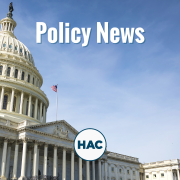


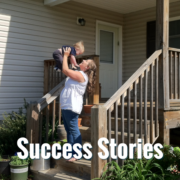
 For thirty years, Adults and Youth United Development Association (AYUDA) has worked to improve housing conditions and increase access to public services in the colonias in and around San Elizario, Texas. According to AYUDA’s Housing and Community Services Director Miguel Chacon, the group was established to advocate for running water and septic tanks in colonias but has grown to providing home repair, rental assistance, vaccine outreach, food distribution, and more.
For thirty years, Adults and Youth United Development Association (AYUDA) has worked to improve housing conditions and increase access to public services in the colonias in and around San Elizario, Texas. According to AYUDA’s Housing and Community Services Director Miguel Chacon, the group was established to advocate for running water and septic tanks in colonias but has grown to providing home repair, rental assistance, vaccine outreach, food distribution, and more. 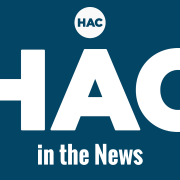
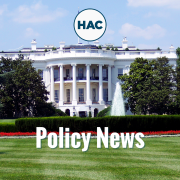
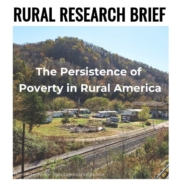 Housing Assistance Council
Housing Assistance Council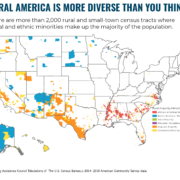 Housing Assistance Council
Housing Assistance Council